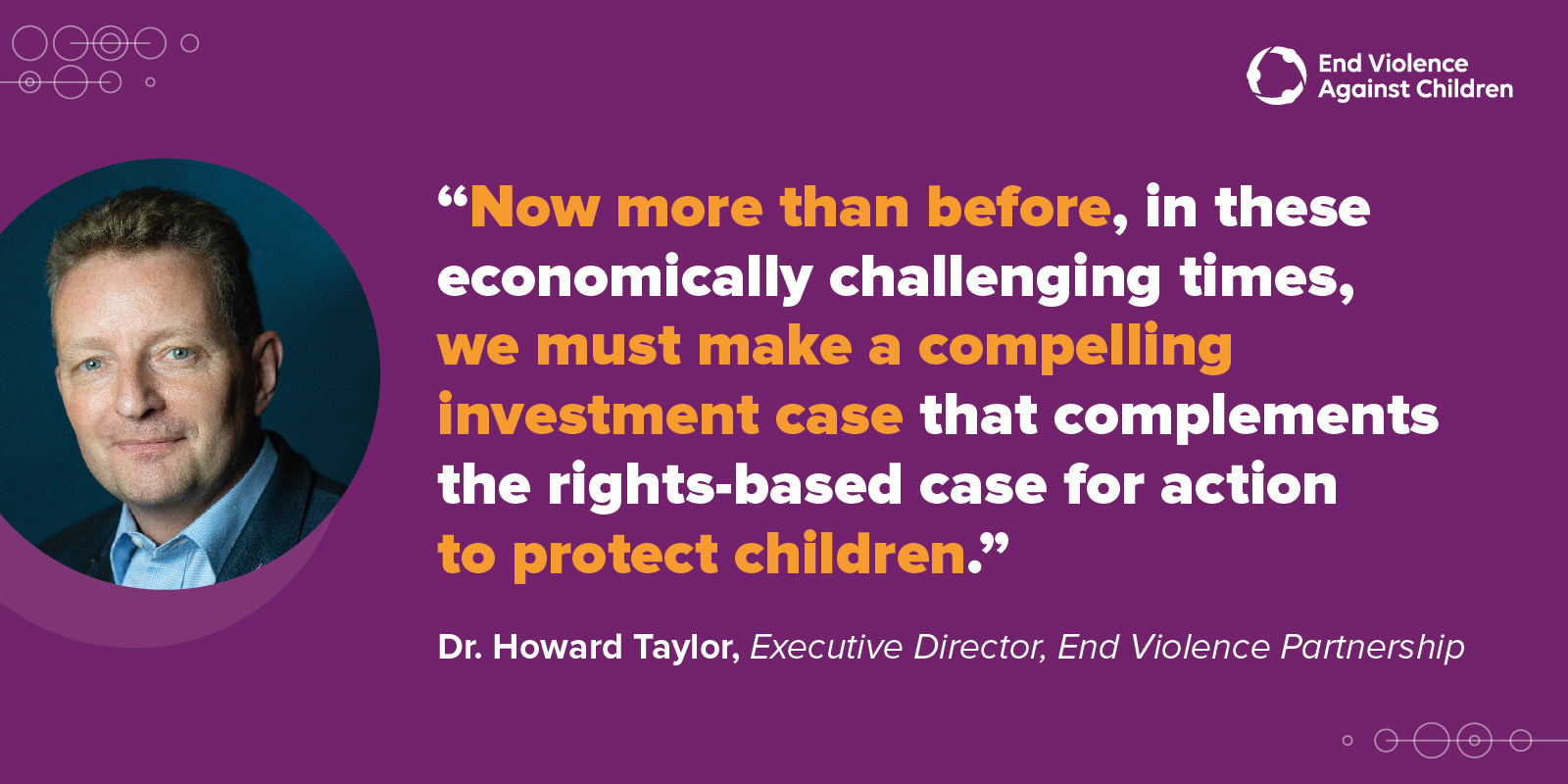In September 2015, 193 world leaders committed to the 17 Sustainable Development Goals (SDGs) as a universal call to action to end poverty, protect the planet, and ensure all people enjoy peace and prosperity.
Fast forward seven years to today, and a confluence of global crises is putting this ambitious agenda in jeopardy. COVID-19, climate change, conflict, surges in the cost of living and weakening international co-operation are compounding to pause or even reverse development progress.
Yet there is reason to be hopeful, to press ahead in partnership with renewed purpose and urgency, to adapt to the ever-changing new normal, and to work together to overcome challenges and to seize emerging opportunities to end violence against children. This will mean going beyond national interest or being satisfied with protecting past development gains or how we used to work. It will mean being accountable for past commitments made to children. And it will mean being resolute in our collective efforts to address the pressing universal issues of our time as an opportunity for transformational change.
Globally, regionally, nationally and locally, we know enough about what works to prevent and respond to violence against children. Despite the challenging context, I continue to be inspired by the energy and commitment of our 750 partner organisations across every continent and sector who work tirelessly each-and-every day so that every child can grow-up safe, secure and in a nurturing environment.
When we dig beneath the headlines, we see individuals and organisations building on decades of learning and progress - and doing more to end violence against children than ever before. Leaders are taking notice and taking action. In the last few months alone: G7 leaders made a historical commitment to step-up efforts to prevent and combat child sexual exploitation and abuse (CSEA); Cuba introduced new laws to prohibit corporal punishment; Zambia and the Philippines abolished child marriage; the European Commission proposed groundbreaking new legislation on preventing and combatting online CSEA; and the UN officially established a World Day for the Prevention of and Healing from Child Sexual Exploitation, Abuse and Violence.
Although there is momentum and action, the enormity of the task to end all forms of violence against children does not escape me, particularly at a time of economic uncertainty constraining government budgets for both domestic programmes and international aid. Global investment to scale proven solutions to violence against children remains woefully inadequate. It is both disproportionately small given the scale and impact of the violence that children face in every country and community, and it also misses out on the cost-effective multiplier of investing to prevent violence against children and in doing so improve child health, education, gender equality and economic growth outcomes. Now more than before, in these economically challenging times, we must make a compelling investment case that complements the rights-based case for action to protect children.

As a community and a Partnership, we need to take a long view of change and draw encouragement and confidence from the progress we are making. Our work to challenge and change the status quo and shift systems, structures and harmful social norms will take decades not years to achieve. However, what we do today, and tomorrow will undoubtedly change the nature and shape of what is possible.
2023 is shaping up to be a pivotal year for progress. By leveraging the diverse capabilities, expertise and networks within the End Violence Partnership, together we are uniquely positioned to navigate the challenges and seize emerging opportunities.
Priorities for the year ahead include:
- strengthening support for in-country partners working with governments to embed violence prevention and response into national development plans;
- investing to tackle online child sexual exploitation and abuse (OCSEA) and in doing so building the evidence-base for action at scale and for advocacy for an internet that is safe by design for children;
- collaborating with education sector partners to make learning environments safe, non-violent, and inclusive;
- advocating for and supporting implementation of the six Together to #ENDviolence policy proposals;
- engaging G7 governments to press for accelerated delivery of the G7 leaders’ commitment to prevent and combat sexual exploitation and abuse globally; and
- working with partners including adult survivors to launch an investment case and campaign to mobilise domestic and international finance to turn the tide of childhood sexual violence.
The scale and impact of violence against children can no longer be ignored. Together we have made enormous progress but there is much to do. Now is the time to move ahead with a bold, can-do attitude, confident in our pathway, energised by the growing global movement of which we are each a part, and inspired by the powerful agency and courageous advocacy of survivors and children acting on their deepest values and lived experience.
Let’s work Together to #ENDviolence.
Learn more about the Together to #ENDviolence global campaign & explore a snapshot that recaps progress to end violence in 2022.